
Introduction
In our study on the use of tefillin we came to the conclusion that it is not possible to defend either side of the argument. In the same scriptures we also see the reference to the writing of the words on the doorpost. This leads to the next question – should we interpret this part literally?
Scriptures
The practice of affixing a Mezuzah is based on two Scriptures found in the book of Deuteronomy. In both cases the mention of fixing the words to your door-post, follows the commandment of binding to your hand and forehead.
Deuteronomy 6:8–9
8 “You shall bind them as a sign on your hand and they shall be as frontals on your forehead. 9 “You shall write them on the doorposts of your house and on your gates.Deuteronomy 11:18–21
18 “You shall therefore impress these words of mine on your heart and on your soul; and you shall bind them as a sign on your hand, and they shall be as frontals on your forehead. 19 “You shall teach them to your sons, talking of them when you sit in your house and when you walk along the road and when you lie down and when you rise up. 20 “You shall write them on the doorposts of your house and on your gates, 21 so that your days and the days of your sons may be multiplied on the land which YHVH swore to your fathers to give them, as long as the heavens remain above the earth.
What is interesting to note is that the other two verses that describe the tefillin (Exodus 13:8-10,16), do not mention the words on the doorpost.
It is important to remember that the word “mezuzah” originally had a different meaning than what we use it for today. The Hebrew word מְזוּזָה mezû·zÄ(h), actually means “doorpost“. It simply referred to the door post, not the little box that is today affixed to the post.
In the last part of Deut 11:21, we also see how long these instructions are valid for. It is clearly stated that these instructions are valid “as long as the heavens remain above the earth.”
Significance of references to doorposts
Throughout Scripture, we find that the doorpost of a house is mentioned. The best known instance of a doorpost would be connected with the exodus from Egypt. The night that the angel of death came to kill the first born of the Egyptians, the Israelites were instructed to mark their houses by painting blood on the doorpost. It was the blood of the lamb that made the angel pass over their house, thus saving the firstborn from death.
Exodus 12:7
7 ‘Moreover, they shall take some of the blood and put it on the two doorposts and on the lintel of the houses in which they eat it.Exodus 12:12–13
12 ‘For I will go through the land of Egypt on that night, and will strike down all the firstborn in the land of Egypt, both man and beast; and against all the gods of Egypt I will execute judgments—I am YHVH. 13 ‘The blood shall be a sign for you on the houses where you live; and when I see the blood I will pass over you, and no plague will befall you to destroy you when I strike the land of Egypt.Exodus 12:21–22
21 Then Moses called for all the elders of Israel and said to them, “Go and take for yourselves lambs according to your families, and slay the Passover lamb. 22 “You shall take a bunch of hyssop and dip it in the blood which is in the basin, and apply some of the blood that is in the basin to the lintel and the two doorposts; and none of you shall go outside the door of his house until morning.
The next part of Scripture that makes reference to the doorpost is in context of the bondservant. When a servant decides not to go free, but to stay with his master, the master must bring him to the doorpost and pierce his ear with an awl.
Exodus 21:5–6
5 “But if the slave plainly says, ‘I love my master, my wife and my children; I will not go out as a free man,’ 6 then his master shall bring him to YHVH, then he shall bring him to the door or the doorpost. And his master shall pierce his ear with an awl; and he shall serve him permanently.
When the first temple is built by Solomon, we also see a description of the doorposts.
1 Kings 6:31–34
31 For the entrance of the inner sanctuary he made doors of olive wood, the lintel and five-sided doorposts. 32 So he made two doors of olive wood, and he carved on them carvings of cherubim, palm trees, and open flowers, and overlaid them with gold; and he spread the gold on the cherubim and on the palm trees. 33 So also he made for the entrance of the nave four-sided doorposts of olive wood 34 and two doors of cypress wood; the two leaves of the one door turned on pivots, and the two leaves of the other door turned on pivots.
Also in the description of Solomon’s palace, we read how decorative the doorposts of his palace were.
1 Kings 7:2–5
2 He built the house of the forest of Lebanon; its length was 100 cubits and its width 50 cubits and its height 30 cubits, on four rows of cedar pillars with cedar beams on the pillars. 3 It was paneled with cedar above the side chambers which were on the 45 pillars, 15 in each row. 4 There were artistic window frames in three rows, and window was opposite window in three ranks. 5 All the doorways and doorposts had squared artistic frames, and window was opposite window in three ranks.
King Hezekiah had also decorated the doors and the doorposts of the Temple with gold. This gold was later stripped off to give to Sennacherib, the king of Assyria.
2 Kings 18:13–16
13 Now in the fourteenth year of King Hezekiah, Sennacherib king of Assyria came up against all the fortified cities of Judah and seized them. 14 Then Hezekiah king of Judah sent to the king of Assyria at Lachish, saying, “I have done wrong. Withdraw from me; whatever you impose on me I will bear.†So the king of Assyria required of Hezekiah king of Judah three hundred talents of silver and thirty talents of gold. 15 Hezekiah gave him all the silver which was found in the house of YHVH, and in the treasuries of the king’s house. 16 At that time Hezekiah cut off the gold from the doors of the temple of YHVH, and from the doorposts which Hezekiah king of Judah had overlaid, and gave it to the king of Assyria.
When Ezekiel is shown the third temple we also read in a number of verses details of the doorposts of this temple.
Ezekiel 41:21
The doorposts of the nave were square; as for the front of the sanctuary, the appearance of one doorpost was like that of the other.Ezekiel 43:7–8
7 He said to me, “Son of man, this is the place of My throne and the place of the soles of My feet, where I will dwell among the sons of Israel forever. And the house of Israel will not again defile My holy name, neither they nor their kings, by their harlotry and by the corpses of their kings when they die, 8 by setting their threshold by My threshold and their door post beside My door post, with only the wall between Me and them. And they have defiled My holy name by their abominations which they have committed. So I have consumed them in My anger.Ezekiel 45:19
19 “The priest shall take some of the blood from the sin offering and put it on the door posts of the house, on the four corners of the ledge of the altar and on the posts of the gate of the inner court.Ezekiel 46:2
2 “The prince shall enter by way of the porch of the gate from outside and stand by the post of the gate. Then the priests shall provide his burnt offering and his peace offerings, and he shall worship at the threshold of the gate and then go out; but the gate shall not be shut until the evening.
We can thus see that the doorpost of a building was a significant part of the building. This is further confirmed by the fact that a number of practices in the Biblical times, centered around the posts of the gate/door. We see that Eli sat at the doorpost of the temple when Hannah entered to pray. We also see a number of references of people sitting in the gates of the city.
1 Samuel 1:9–10
9 Then Hannah rose after eating and drinking in Shiloh. Now Eli the priest was sitting on the seat by the doorpost of the temple of YHVH. 10 She, greatly distressed, prayed to YHVH and wept bitterly.Genesis 19:1
Now the two angels came to Sodom in the evening as Lot was sitting in the gate of Sodom. When Lot saw them, he rose to meet them and bowed down with his face to the ground.Deuteronomy 22:13–15
13 “If any man takes a wife and goes in to her and then turns against her, 14 and charges her with shameful deeds and publicly defames her, and says, ‘I took this woman, but when I came near her, I did not find her a virgin,’ 15 then the girl’s father and her mother shall take and bring out the evidence of the girl’s virginity to the elders of the city at the gate.Ruth 4:1–2
1 Now Boaz went up to the gate and sat down there, and behold, the close relative of whom Boaz spoke was passing by, so he said, “Turn aside, friend, sit down here.†And he turned aside and sat down. 2 He took ten men of the elders of the city and said, “Sit down here.†So they sat down.
From all these references we see that the doors and gates are seen as important by people in the Biblical times. Doors and gates serve the purpose of keeping precious things in and bad things out. They act as a sort of guardian to the space that lies beyond; room, house or city. Like the hand and the forehead could be seen as symbolic, so it is also possible to see the posts of the doors and gates as symbolic for entering or exiting.
What is the tradition today
In modern times, the custom is to write the words on the doorpost by putting small parchments of Scripture in a container and to then affix this to the right hand post of the door or gate. The Scriptures that are inserted into the mezuzah of orthodox 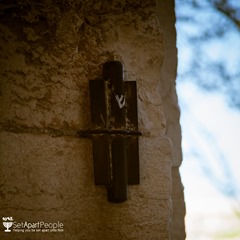 Jews are Deut 6:4–9 and Deut11:13–21. The container has the word Shaddai – שדי written on it. One side of the mezuzah has an opening that makes it possible to see the scroll inside.
Jews are Deut 6:4–9 and Deut11:13–21. The container has the word Shaddai – שדי written on it. One side of the mezuzah has an opening that makes it possible to see the scroll inside.
In order for it to be a “kosher” mezuzah, the scroll must be written on parchment of a clean animal. It may only be written by a ordained scribe. The one difference to the rules of writing a Torah scroll, is that the mezuzah scroll may be written from memory. A Torah scroll must always be written from a copy. The text is normally written on 22 equally spaced lines. The other difference is that the scrolls of tefillin and the mezuzah must be written in the Assyrian Hebrew script. The torah scroll may be written in any Hebrew script.2
The mezuzah is fixed to the outside doors and gates of a property used as a residence by non-orthodox Jews, by the resident of the property. It is affixed to the right hand post. It is upper part is inward and the lower part outward, and about a handbreadth from the outer edge of the door-post. 1 When the mezuzah is affixed, a specific blessing is recited. Orthodox Jews affix the mezuzah to every doorframe in their house, except the bathroom/toilet. If a home is rented outside of Israel for less than 30days, the Jew also does not have to affix a Mezuzah. Also, when staying in a hotel, even within Israel, any Jew is exempt from affixing the mezuzah.
The Mezuzah is also affixed to the gates of Jewish cities. A good example of this can be seen on the gates around the old city of Jerusalem. The mezuzot can still be found today against some of the gates of the old. Jaffa Gate has a large metal mezuzah against the entrance to the gate.
History of the tradition
In the oldest translation of the Hebrew Scriptures, the Targum. These translations date from the time after the return from exile in Babylon. We see the interpretation of the Targum also to be an instruction of physically affixing objects in your house. However, they see these as being affixed to three places.
Deut 6:4-9
Mosheh the prophet said to the people of the house of Israel, Follow after the true worship of your fathers, that you may love YHVH your Elohim with each disposition of your hearts, and also that He may accept your souls, and the (dedicated) service of all your wealth; and let these words which I command you this day be written upon the tables of your hearts. And thou shalt unfold them to thy children, and meditate upon them when thou art sitting in your houses, at the time when you are occupied in secret chambers, or in journeying by the way; at evening when you lie down, and at morn when you arise. And you shall bind them as written signs upon thy left hand, and they shall be for tephillin upon thy forehead over thine eyes. And thou shalt write them upon the pillars, and affix them in three places, against the cupboard (or repository), upon the posts of thy house, and on the right hand of thy gate, in thy going out. (Targum Onkelos)3
The Targum also adds an instruction to add these writings on your cupboard. The word for “cupboard” could also be translated as “repository” in English.
The oldest archeological proof that we have is from the caves of Qumran. In cave 8 a parchment (8Q4 also known as 8Q Mez) was found that is written in Hebrew square script. It is dated to have been written during the Herodian period. This parchment contains the text of Deuteronomy 10:12–11:21.
Several other fragments of mezuzah scrolls were found in other caves in the Judean desert. In Cave 4 the archeologists found another seven fragments (4Q149 – 155). At Wadi Murabba’at another parchment from a mezuzah scroll was found – MUR5, also known as MUR Mez. These fragments have been dated from the Hasmonean, Herodian, and Roman periods.
Just like we saw with tefillin, we have no physical proof of the existence of mezuzot in the Hebrew Scriptures. Archeology can only date the practice back to the Hasmonean period (inter-testamental period). The Targums show that the interpretation after the exile, leaned towards a physical object being fixed to the cupboards, doors and gates.
Unlike the tefillin, we see the practice of affixing the scriptures also amongst the Samaritans. However, they have a different custom. They also see it as a muzuzah as a physical object. In the past, they built the 10 commandments in above the door of the house. Some of these old Samaritan mezuzot can be seen in the Israel Museum in Jerusalem. Nowadays, the Samaritans write words of Scripture on a marble slab that is affixed at the door of their houses. They also decorate their homes with parchments that display Torah verses written in elegant calligraphy.
Some Karaites also use a mezuzah on their front doors. For the Karaite sect the use of a mezuzah is not required. Like the Samaritans, they prefer to have the Ten Commandments written on these mezuzot. Unlike the Samaritans, they affix the mezuzah to the doorpost. However, this is affixed straight up and down, not slanted like the rabbinic tradition.
Mezuzah and superstition
Over the years, the mezuzah has been associated with a lot of superstition. Some of these customs still exist today and is being practiced on a daily basis.
In the middle ages a number of kabalistic additions were made to the mezuzah.These included adding the names of angels to the mezuzah or putting symbols, like the star of David, on the parchment. These additions were supposed to give the mezuzah additional powers to protect the house from evil spirits. This custom was opposed by sages like Rambam (Maimonides.) He went so far to say that people who do these additions will not share in the world to come.
The Talmud also treats the mezuzah as an amulet that has the power of protection. They base this on a verse in Psalm 121. They claim that the way YHVH will protect your going out and coming in is via the doorpost. This refers for the followers of the oral law to the power of the mezuzah.
Psalm 121:7–8
7 YHVH will protect you from all evil; He will keep your soul. 8 YHVH will guard your going out and your coming in From this time forth and forever.
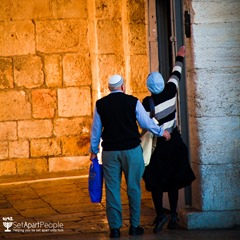 Today, we still see the tradition of touching or kissing the mezuzah when entering or leaving a house. This is not mentioned anywhere in Scripture. The kissing of the mezuzah is also not mentioned in the oral law. The touching of the mezuzah is also not commanded by the oral law, but is implied in some of the texts in the Talmud. Kissing the mezuzah is a relatively new custom. It is done by putting the middle finger on the word “Shaddai” and then kissing the finger. Even within orthodox Judaism there is a lot of discussion going on about the requirement of this practice.
Today, we still see the tradition of touching or kissing the mezuzah when entering or leaving a house. This is not mentioned anywhere in Scripture. The kissing of the mezuzah is also not mentioned in the oral law. The touching of the mezuzah is also not commanded by the oral law, but is implied in some of the texts in the Talmud. Kissing the mezuzah is a relatively new custom. It is done by putting the middle finger on the word “Shaddai” and then kissing the finger. Even within orthodox Judaism there is a lot of discussion going on about the requirement of this practice.
Conclusion
As in the case of the tefillin, there is no clear case to be made either way for the affixing of a mezuzah. Amongst the Jewish sects (Rabbinic, Karaite and Samaritans) there is more agreement in the case of the mezuzah. They still do not agree on all the details.
Our interpretation is that if we choose to affix the mezuzah to our doorpost, it should be as a reminder. It is a visual reminder to the word of YHVH, and our obedience to His Word. It is not an object with any special powers to guard or protect. YHVH is our protector. Like in the verse that was sighted earlier, it is YHVH that will protect you. Not any object or specific material you wear, or a chant or blessing that you say.
Psalm 121:7
YHVH will protect you from all evil; He will keep your soul.
References
- Singer, I. (Ed.). (1901–1906). In The Jewish Encyclopedia: A Descriptive Record of the History, Religion, Literature, and Customs of the Jewish People from the Earliest Times to the Present Day, 12 Volumes. New York; London: Funk & Wagnalls.
- Jerusalem Talmud, Megillah 1:9 (folio 71B)
- Etheridge, J. W. (1862). The Targums of Onkelos and Jonathan Ben Uzziel: On the Pentateuch With The Fragments of the Jerusalem Targum From the Chaldee



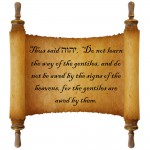
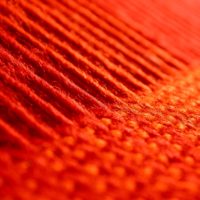
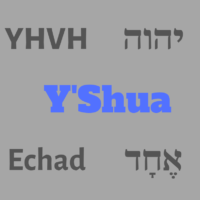
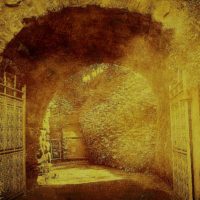


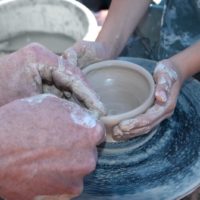
Leave a Reply